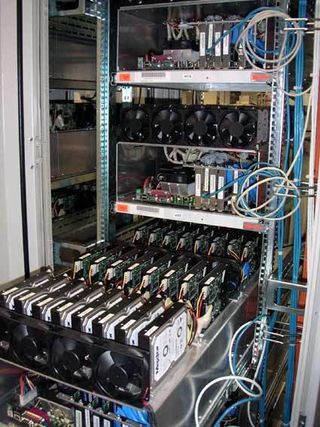Hard Drives Instead of Tapes? 70 TB Backup RAID at the University of Tübingen
Node Operating System: As You Like It
The cheapest one is, of course, Linux. But you can also install Windows 2000 Server or Windows Server 2003 - it makes no difference in terms of performance. 3Ware provides drivers for any of the three OSes.
Architecture: Connected Via Gigabit Ethernet

Okay, we've described the systems - but how the heck does the data make it to the RAID array? Connecting the individual computers to the university network via Gigabit Ethernet isn't just consistent; it is affordable and gives the university a lot of freedom. If it ever needs more storage capacity, it just has to slap on as many extra modules as it needs. And they don't have to stay in the same room; they can be put anywhere, just as long as they are connected to the university network via Gigabit Ethernet. This way, you can have a redundant architecture to ensure that your longer-term backups remain safe and secure. The university usually stores data for several months, at most.
In principle, you could increase the data-transfer rate using 10 Gbit Ethernet, but the cost of doing so is out of proportion to the performance gain. For example, 10 Gbit Ethernet runs through fiber-optic cables. Also, there is no affordable equipment for TCP packaging, so you need to account for a ten-fold transfer rate when buying the computer system - much faster processors, in other words. And that, in turn, means you need different platforms with PCI-X and faster controllers. In the IDE realm, though, there's still nothing that even remotely approximates this kind of system.
Stay on the Cutting Edge
Join the experts who read Tom's Hardware for the inside track on enthusiast PC tech news — and have for over 25 years. We'll send breaking news and in-depth reviews of CPUs, GPUs, AI, maker hardware and more straight to your inbox.
Current page: Node Operating System: As You Like It
Prev Page Spaghetti, Anyone? Time For Serial ATA Next Page Backup Management: Slick With SoftwareMost Popular

